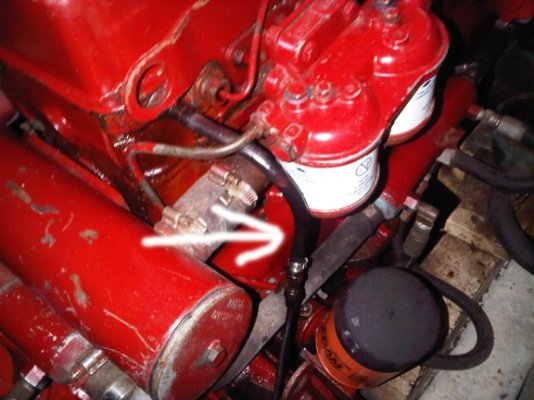Fotoman
Guru
- Joined
- Nov 12, 2009
- Messages
- 649
Last weekend I was taking a better look at the fuel system because I want to install a polishing system next spring. My boat has two relatively new fuel tanks intalled aft of the original steel ones. The PO told me the old ones were empty and not used anymore. They are rusted and I am plannig to remove them.
But here is where things get weird. I noticed the return line from the engine was still going to one of the old tanks!! That started to make sense to me because that tank has a little fuel leak. I thought it might be a bit of old fuel left in the tank but now I'm thinking that tank might actually be full of fuel... So to get a better idea of the flow of fuel going in that tank I unplugged the return line and put it in a jar and started the engine. And this is where things get really weird. There was no fuel coming out of the return line... I ran the engine for about 5 minutes at different rpm and nothing would come out of the return line. Am I missing something here?
Here's picture of the return line.
But here is where things get weird. I noticed the return line from the engine was still going to one of the old tanks!! That started to make sense to me because that tank has a little fuel leak. I thought it might be a bit of old fuel left in the tank but now I'm thinking that tank might actually be full of fuel... So to get a better idea of the flow of fuel going in that tank I unplugged the return line and put it in a jar and started the engine. And this is where things get really weird. There was no fuel coming out of the return line... I ran the engine for about 5 minutes at different rpm and nothing would come out of the return line. Am I missing something here?
Here's picture of the return line.

